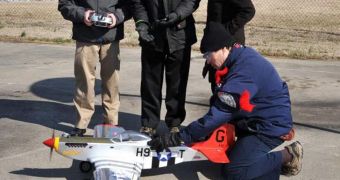This past April 7, the United States Navy announced that researchers at the Naval Research Laboratories had successfully demoed a fuel-from-seawater technology that they had been working on for several years now.
As reported back in October 2012, what this so-called fuel-from-seawater technology boils down to is recovering both carbon dioxide and hydrogen from seawater, and then using these two compounds to obtain liquid hydrocarbon fuel.
The end goal is to figure out a way to mass produce fuel using carbon dioxide and hydrogen extracted from seawater as feedstock. According to the United States Navy, this breakthrough would ensure energy security, given the fact that fuel would come at a fixed cost and availability would no longer be an issue.
Besides, the technology has the potential to enhance combat capabilities. This is because the Navy would be able to produce fuel either near to or at the point of use whenever necessary, and would no longer have to rely on fuel delivery strategies.
What the United States Navy meant to say when announcing that researchers at the Naval Research Laboratory had demoed proof-of-concept of their fuel-from-seawater technology is that, although this technology is not yet ready to be implemented on a commercial scale, it is nonetheless feasible.
Thus, scientists are said to have used a liquid hydrocarbon resulting from a gas-to-liquid process that employs carbon dioxide and hydrogen as feedstock to fly a small-scale replica of the legendary Red Tail Squadron.
What's more, the United States Navy says that the aircraft replica flew on the liquid hydrocarbon while sporting a conventional two-stroke internal combustion engine. Footage of the small aircraft’s flight has been shared with the public and is available in the video below.
Commenting on this achievement, research chemist Dr. Heather Willauer with the Naval Research Laboratories said, “In close collaboration with the Office of Naval Research P38 Naval Reserve program, NRL has developed a game changing technology for extracting, simultaneously, CO2 and H2 from seawater.”
“This is the first time technology of this nature has been demonstrated with the potential for transition, from the laboratory, to full-scale commercial implementation,” Dr. Heather Willauer added.
The specialists involved in this project expect that, should their work get the funding and partnerships it needs, it will be some 7 – 10 years until this innovative technology becomes commercially viable. They estimate that, when implemented on a large scale, this technology will bring the cost of jet fuel somewhere in the range of $3 to $6 (€2.18 to €4.37) per gallon (3.78 liters).

 14 DAY TRIAL //
14 DAY TRIAL // 